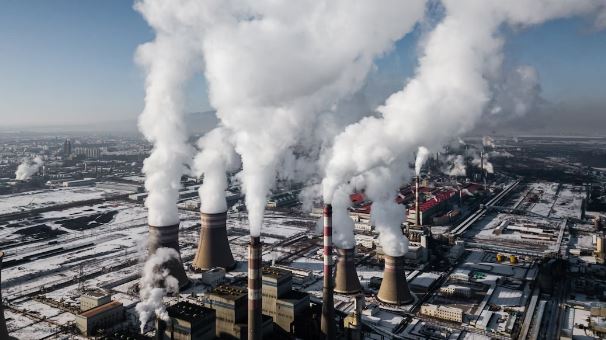The war against the impacts of climate change has received a major boost after the global community reached a deal to cut greenhouse gases in shipping.
The framework was agreed upon on Friday during the meeting of the UN International Maritime Organisation (IMO) Marine Protection Committee.
IMO secretary general Arsenio Dominguez said the strides were arrived at as a result of the collaborative spirit that led to the deal.
“This represents another significant step in our collective efforts to combat climate change and modernise shipping,” he said.
“It demonstrates that IMO delivers on its commitments.”
The move aims for net-zero emissions from the sector by 2050 and will be formally adopted in October before coming into force in 2027.
The new framework agreed on setting mandatory fuel standards and introducing an industry-wide carbon pricing mechanism.
They will apply to large ocean-going vessels with more than 5,000 gross tonnage, which collectively account for 85 per cent of carbon dioxide emissions from the marine shipping fleet.
The maritime sector presently accounts for about 2.8 per cent of all global greenhouse gas emissions, mainly due to its rapid growth, dependence on carbon-intensive bunkers and the sheer size of its business.
More than 80 per cent of the world's merchandise trade by volume is transported by sea.
However, maritime transport is also one of the economic sectors with a greater potential to reduce its GHG emissions.
The IMO is the UN specialised agency responsible for the safety and security of global shipping and the prevention of marine and atmospheric pollution by ships.
Established in 1948 and headquartered in London, it develops international treaties, such as the International Convention for the Safety of Life at Sea (Solas) and the International Convention for the Prevention of Pollution from Ships (Marpol).
The framework introduces a dual approach, including a global fuel standard that will progressively lower the annual greenhouse gas fuel intensity of marine fuels.
The other is a greenhouse gas pricing mechanism requiring high-emitting ships to pay for their excess pollution.
Under the new system, ships that exceed emissions limits will need to acquire remedial units to offset their excess pollution.
Meanwhile, vessels operating with zero or near-zero emissions will be eligible for financial rewards, creating a market-driven push toward cleaner maritime transport.
A key element of the new framework is the IMO Net-Zero Fund, which will collect revenues from the carbon pricing mechanism.
These funds will support innovation, research, infrastructure and transition initiatives in developing countries.
It will also be used to mitigate negative impacts on vulnerable nations, such as small island developing states and least developed countries, which bear the brunt of both climate change and economic pressures in the shipping sector.
The draft regulations will undergo formal adoption in October 2025.
If ratified during the IMO session, as expected, the measures will enter into force in 2027, giving the industry time to adapt to new requirements and invest in alternative fuels and technologies.
Under the draft regulations, ships will be required to comply with the global fuel standard.
Ships must reduce, over time, their annual greenhouse gas fuel intensity (GFI) — that is, how much GHG is emitted for each unit of energy used. This is calculated using a well-to-wake approach.
Ships emitting above GFI thresholds will have to acquire remedial units to balance their deficit emissions, while those using zero or near-zero GHG technologies will be eligible for financial rewards.








